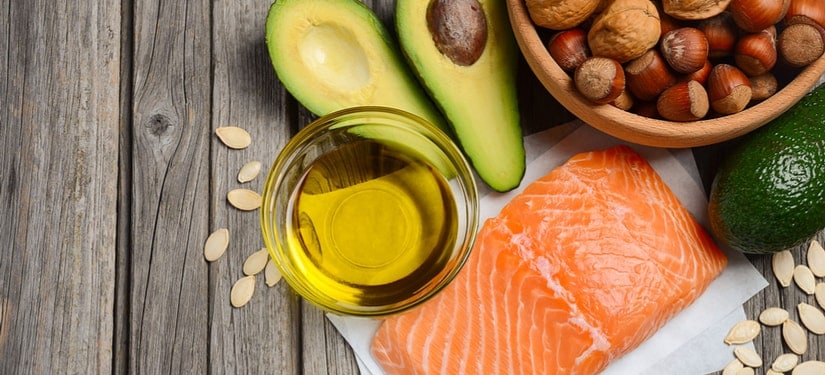The ketogenic diet has indeed gone a long way from being a prescription diet for epileptic patients. Now, weight loss dieters, bodybuilders, and athletes use keto diet to enhance their performance further and decrease carbohydrates on their food.
But not everyone prefers the strictness of the ketogenic diet. After all, who wouldn’t love to have bagels or pasta alfredo for lunch? Thus, some prefer adopting the modified Atkins diet, a type of keto that is more liberal than the standard.
Maybe you are one of the people who would like to try the keto diet, but don’t know where and how to start. Or perhaps you want to explore the options you have in maximizing fats as your primary energy source. Either way, we hope that this would help you decide which type of keto diet would work best for your current situation.
For this article, we would compare the Modified Atkins diet (MAD) and the Standard Ketogenic Diet (SKD).
Similarities
Naturally, both MAD and SKD emphasizes high fat intake and ketosis as a way to provide energy to the body. And because not one food group can give all the nutrients you need, vitamin and mineral supplementation is necessary when doing either of the two diets.
Differences based on the criteria
The fat ratio
Calories from SKD are divided into 70-80% for fat, 20-25% for protein, and 5-10% for carbohydrates. Some opt the more restrictive route, with little to no carbohydrates to ensure ketosis.
On the other hand, MAD has none of these percentages, only ratio, which means 1 fat: 1 protein-carbohydrates. This would require some computing. To put things simply, carbohydrates in MAD ranges to only about 20-50 grams per day.
The preparation
For ketosis to start, SKD requires the individual to undergo a fasting period that could last from 3-10 days. This is to ensure that all glycogen stores in the liver and muscles are utilized, which leaves the body no choice but to use fat as an energy source instead.
As for MAD, no fasting is required, but the food changes are done overnight. Despite this, the method is so easy to adopt that it is widely used as a way to transition from ketogenic diet to the normal one, and vice versa.
It is also important to note that SKD heavily relies on precise measurements for it to become effective. Once you adopt this diet, you must become best of friends with the kitchen measuring cup, spoons, beam balance, and other measuring tools.
For MAD, measurement is also involved. Luckily, the equipment you need is something that you use every day, like household spoons and cups, to measure.
The food list
For SKD, the focus is to eliminate starchy, processed food and replace it with real, whole ones. This means that no rice, wheat, root crops, sweets, beans and legumes, and even fruits. Aside from that, unhealthy oil sources are highly discouraged despite the fact that it’s fat through and through. Only pure vegetable oils, like olive, safflower, and sesame, are allowed, including meats, eggs, cheese, and selected dairy products (preferably without milk). Butter is also a staple.
The MAD has relatively the same food do’s and don’ts as that of SKD. As previously mentioned, the only difference is that this method allows more liberal amounts of carbohydrates and protein, with the latter going as far as 35% in some individuals. The downside of this, however, is the fact that once protein exceeds the amount of fat ingested, the body would use it instead of the latter as energy sources. In biochemistry, if the protein is used as fuel, the body would convert it first to carbohydrates, then break it down into energy. This reduces the chances of ketosis occurring which may require you to repeat the preparation.
The weight loss
Because both follow the same mechanism for losing weight, both methods are equally effective in shedding those unwanted pounds. The difference is the duration. SKD can bring you to your dream weight faster than MAD—but it is at the expense of a more restrictive diet.
The effect on work performance
Both diets would have a side effect like nausea, headache, weakness, and constipation or diarrhea because your body is still adjusting to the changes in the diet. These symptoms usually last for up to 3 weeks. Once you get accustomed the change and ketosis is steadily occurring, you can notice that your work performance remains the same, if not better. In fact, studies are claiming that most adopters of both diets experienced sharper concentration and better productivity and focus, something that a high-carb diet rarely gives them.
As you all know, eating food items high in carbohydrates make us feel sluggish by midday because of blood glucose fluctuations. With ketosis, that is simply not the case because fats do not influence insulin, and ketones in the blood replace glucose.
Recommended to whom
SKD is specifically designed for people who have sedentary lifestyles who want to lose weight without doing much exercise. Because the latter is not that involved, the person must work extra hard to follow the method to the letter. If you are an athlete or bodybuilder, the other types of keto diet (specifically TKD and CKD) might work better for you.
On the other hand, MAD is for those who do not want the restrictions of SKD but still want the benefits of the keto diet. It can also be used as a trial period before fully adopting SKD to see if keto is a new lifestyle they can get used to. Finally, maintaining MAD is financially sustainable than SKD because carbohydrate sources are relatively cheaper than high-quality fat ones which are usually required for the diet.
To whom is it NOT recommended
In general, both methods, and any macronutrient-restricting diet for that matter must NEVER be tried by pregnant and lactating women. They need all the nutrients and energy they can get to sustain the additional life inside their wombs.
Aside from that, those who underwent gallbladder removal surgery are highly discouraged to try any keto diet. The gallbladder is an important organ in breaking down and absorbing fats from food. Without it, a significant portion of the fat you ingest would just be flushed out of the body with other waste products.
Both diets are also not recommended for people who have metabolic disorders related to a disrupted fat absorption and metabolism, like Niemann-Pick, Fabry’s disease, Tay-Sachs, and carnitine deficiency, among others. Thus, before starting any diet, you must have yourself checked first by your medical provider.
Indeed, we have gone a long way to exploring what our bodies are capable of, both in food endurance and work performance. Knowing the pros and cons of any diet you want to try, keto or not, and what would fit best in your current environment, can primarily help with the decision-making. You must remember, however, to include your doctor and the people around you in the process so that you can have the medical and moral support you would need to push through with the diet.
If you’re interested in a full layout of how to indulge in a ketogenic diet, read our review of KetoHacks.

